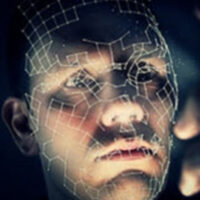How Reliable Is Facial Recognition Technology?

It works wonderfully in the movies. Facial recognition technology (FRT) is the magical tool that identifies bad guys so they can be locked up, saving society from their evil deeds. With 100 percent accuracy, criminals are recognized and put away. Unfortunately, real life is not quite so magical, and FRT has a lot of serious problems.
Law Enforcement Use of FRT in Florida
Here in Florida, a number of police agencies have been experimenting with FRT through Clearview technologies’ free trials. Several agencies have entered contracts to use the technology. Clearview uses an algorithm to match faces caught on tape with billions of images in their files. Unlike other FRT’s that have a data base built on mug shots, sex offender registries, and driver’s licenses, Clearview scans images from social media sites like Twitter, Facebook, and Venmo. With the amount of access in their files, Clearview runs the risk of misidentifications more than other FRTs. And the truth is, mistakes with technology are not uncommon. The primary users of FRT used to be the FBI, but now more and more local police departments are investing in the technology, leading to huge concerns.
Is it Accurate?
Sure, under optimal conditions FRT can be quite reliable. But in real life scenarios, where issues like lighting, the quality of footage, and camera angles differ in every situation, studies reveal that the error rate rose to over nine percent. That means that nearly one in ten identifications were erroneous. And get this: images taken of people passing through airport boarding gates were over 94 percent accurate; but those taken of individuals meandering through a sports arena dipped down to 36 percent accuracy. The primary reason for the discrepancy was cited as differing camera angles. In other research, it was discovered that recognition errors increase tenfold when pictures were compared with photos over a period of years. Aging apparently impacts reliability significantly. The fact of the matter is, accuracy rates differ among various FRT vendors, making one question just how trustworthy results are.
Mistakes Change Lives
Even if only a fraction of those identified through FRT are wrong, it could result in disastrous outcomes for innocent individuals. Studies show that some population groups are more likely to experience errors than others. Darker-skinned women were misidentified as men about one-third of the time in one study. (Oprah Winfrey—certainly a well-known face—was identified as male). Native Americans, Asian and Black women are misidentified at about 50 times the rate of white men. The mistakes would be laughable if they didn’t result in so much unnecessary misery. One program matched mug shots to members of the U.S. Congress. Another pegged a university student as a bombing suspect, leading to death threats and additional drama for the student.
Defending Against Errors
If you are facing criminal charges and FRT is central to the prosecution, an aggressive defense attorney will be able to challenge the unregulated and frequently error-prone technologies used by prosecutors. At the Salazar & Kelly Law Group, our dedicated Kissimmee criminal attorneys look at every angle to provide clients with the vigorous defense they deserve. Contact us today for a confidential consultation.
Resource:
forbes.com/sites/nicolemartin1/2019/09/25/the-major-concerns-around-facial-recognition-technology/?sh=2ff232c04fe3
